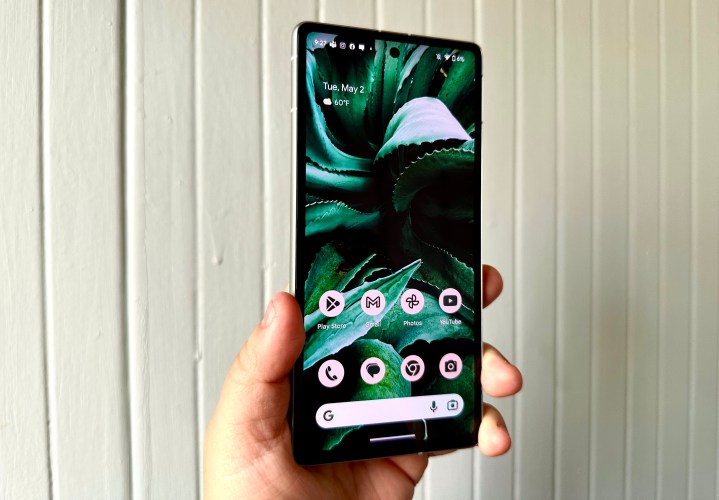Though we have the Google Pixel 7 and Pixel 7 Pro already, Google likes to release a more affordable, budget option for its Pixel lineup. This trend began with the Pixel 3a in 2019 and continued with the Pixel 4a, Pixel 5a, and Pixel 6a. But now we have the Pixel 7a, which looks like the best budget Pixel device yet.
With the Google Pixel 7a, for $499, you’re getting Google’s Tensor G2 chip, a gorgeous 6.1-inch display, a 64MP main camera, wireless charging, and the most durable Pixel body yet. Plus, it comes in some gorgeous colors, including an exclusive Coral shade that you can only find direct from retail Google Stores or online.
But let’s talk about that display for a moment — does it have a 90Hz refresh rate?
Yes, the Pixel 7a has a 90Hz refresh rate

The Google Pixel 7a comes equipped with a 6.1-inch OLED display that has a 90Hz refresh rate. While this is pretty standard for most Android phones nowadays, it’s something that’s been missing from all previous Pixel A-series smartphones. As such, its inclusion on the Pixel 7a is a big deal.
Since the Google Pixel 7a comes with a 90Hz refresh rate, that puts it in the same bracket as the regular Google Pixel 7 ($599), which also caps out at 90Hz. However, the Google Pixel 7 Pro has a mighty 120Hz refresh rate, but it’s much more expensive at $899.
Why does the refresh rate matter?
OK, so the Pixel 7a does indeed have a 90Hz refresh rate — but why does this matter? Basically, the higher the refresh rate on smartphones, the better the screen looks.
The refresh rate for smartphones refers to the number of times a display can update its image in a single second. When the number is higher, that means the display is faster at responding and refreshing. Scrolling through the system, menus, apps, webpages, and pretty much anything will be more smooth and fluid. Refresh rate is also very important in gaming, especially those where every second matters, and you don’t want any lag or latency.
For smartphones, 90Hz is pretty common these days, though some companies — like Apple — are still stuck using 60Hz for some reason. Refresh rates on smartphones can go all the way up to 144Hz and 240Hz, but the most often used one, especially for flagships, is 120Hz.
How the Pixel 7a’s 90Hz refresh rate works

The refresh rate on most smartphones is adaptive, so they essentially adjust the refresh rate based on the content on the screen, going to the max (in this case, 90Hz) rate when needed.
However, when adaptive refresh rates are on, this impacts battery life, so if you prefer to maximize battery, you can turn it off. On the Google Pixel 7a, if you turn it off, then the display will remain on a static 60Hz refresh rate. Turning the adaptive “Smooth Display” option on will have the display automatically adjust between 60Hz and 90Hz when needed.


